Footroot
A page about footrot in sheep describing cause, clinical signs, diagnosis and control.
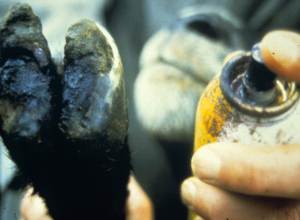
Introduction
An outbreak of footrot can result in an average weight loss of 50g/day resulting mainly from pain and reduced feed intake. It can have a direct effect on fertility of rams with a subsequent lower lambing percentage (>10%). Furthermore disease is associated with significant treatment costs and the condition can predispose to other diseases such as:
–Abortion
–Pasteurellosis
–Twin lamb disease
Including culling, the total cost of a lameness case can result in a loss of between €6.50 – €7.80/ewe.
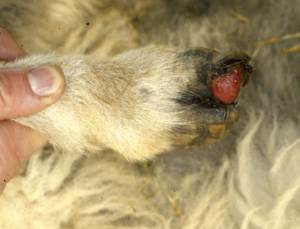
Aetiology
Footrot (also known as Virulent Footrot) is caused by a variety of bacteria though the principal culprit is Dichelobacter nodosus. In treating clinical cases or during routine prevention avoid over-paring as this can lead to toe granuloma – See photo.
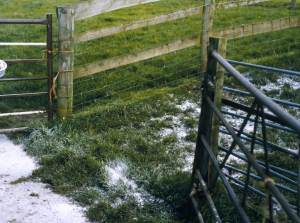
Epidemiology
The clinical consequences of infection are determined by the strain of bacteria, the immune resistance of the animal infected and other predisposing factors. Various strains have varying ability to cause mild or serious disease. Sheep do not develop immunity after natural infection. Predisposing factors could include stocking density, cross-infection from clinical cases / recovered carriers, factors affecting under-foot conditions, dietary change, stress and weather (footrot is more common during summer and moist conditions). Other concurrent diseases such as scald caused by Fusobacterium necrophorum can also predispose to footrot.
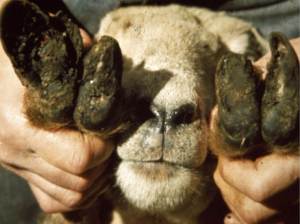
Clinical Signs
The first sign of disease is often lameness though some sheep can show advanced signs of foot disease without major lameness. Disease begins by under-running of the sole and separation of the horn. A pungent odour is evident and as the disease spreads out and upwards from the inter-digital area the whole foot can become affected with sloughing of the whole hoof. One or both cletes may be affected. Recovery can be protracted.
Diagnosis
Clinical signs of footrot are indicative of infection and often do not require further analysis. However laboratory tests can be conducted for a definitive diagnosis and to rule out Contagious Ovine Digital Dermatitis and other foot conditions that could be confused with Virulent Footrot.
Laboratory investigation
Isolation of the organism
Samples that can be submitted for culture and identification of Dichelobacter as the causal agent in disease.
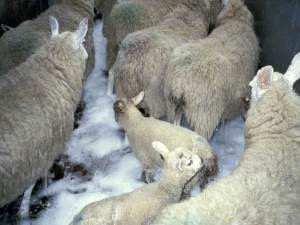
Control
Control of footrot can be summarised by the acronym RSTUV:
- Remove chronically affected sheep. Reduction of circulating bacteria can be achieved by progressive culling of those animals that are identified as a potential source of the bacteria.
- Segregation – All sheep entering the flock must be quarantined for at least 2 weeks before allowing access to the main flock. Maintaining a closed flock is the best approach. All clinical cases should be hospitalised (segregated) from cohorts as this reduces spread of infectious organisms.
- Treat clinical cases – All clinical cases of footrot require aggressive treatment with topical and systemic antibiotics. Footbathing may also be useful. Further information is available from your local veterinary practitioner from whom advice should be sought.
- Understand farm specific factors – Issues such as roadway surfaces, bedding and other under-foot conditions that could contribute to elevated lameness should be addressed.
- Vaccination – The use of vaccine helps to elevate immunity and reduce bacterial circulation. The vaccine is licensed as an aid in the reduction of footrot. It is also licensed for the treatment of footrot in Northern Ireland. This product may only be prescribed by your veterinary practitioner from whom advice must be sought. Further information, relevant to your region, may be obtained on the product by browsing under the heading Species / Relevant Region / Sheep on the homepage.
